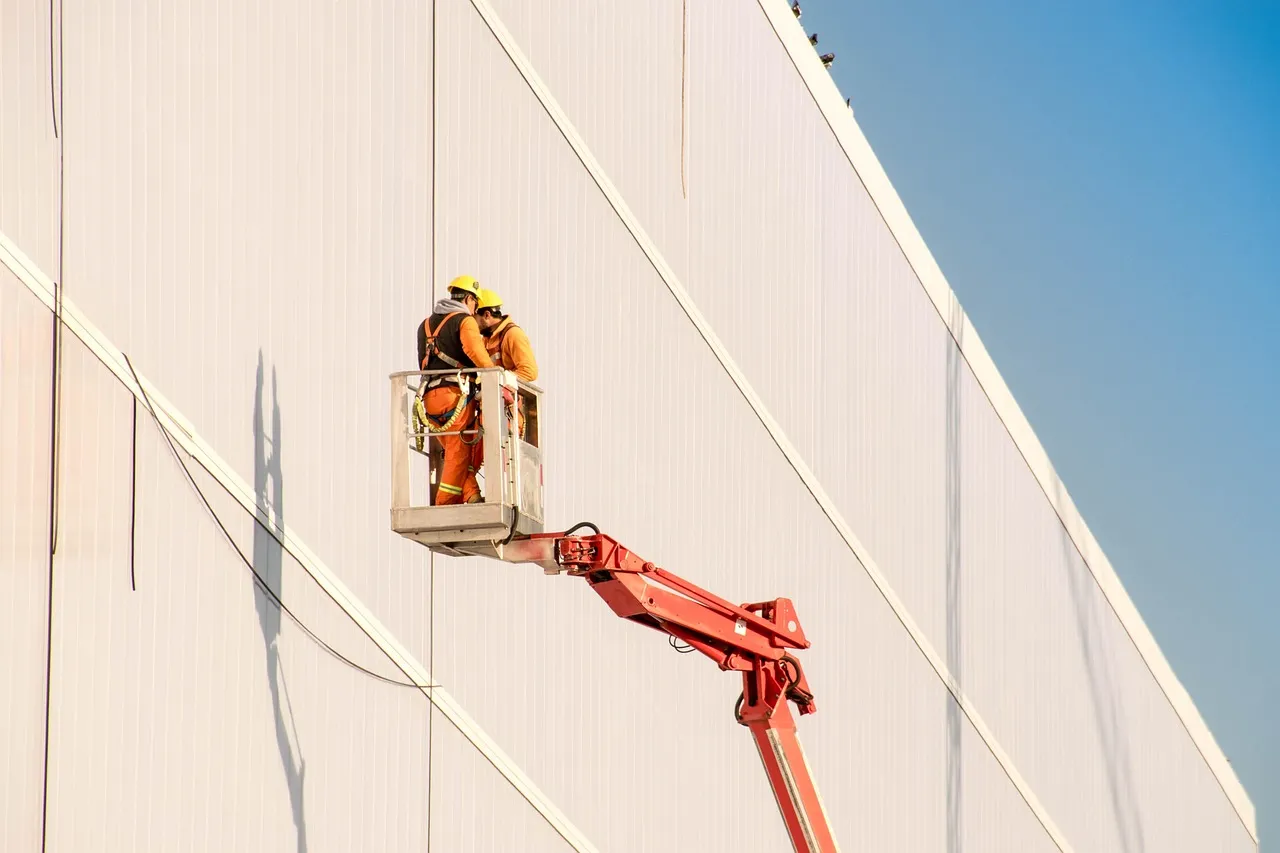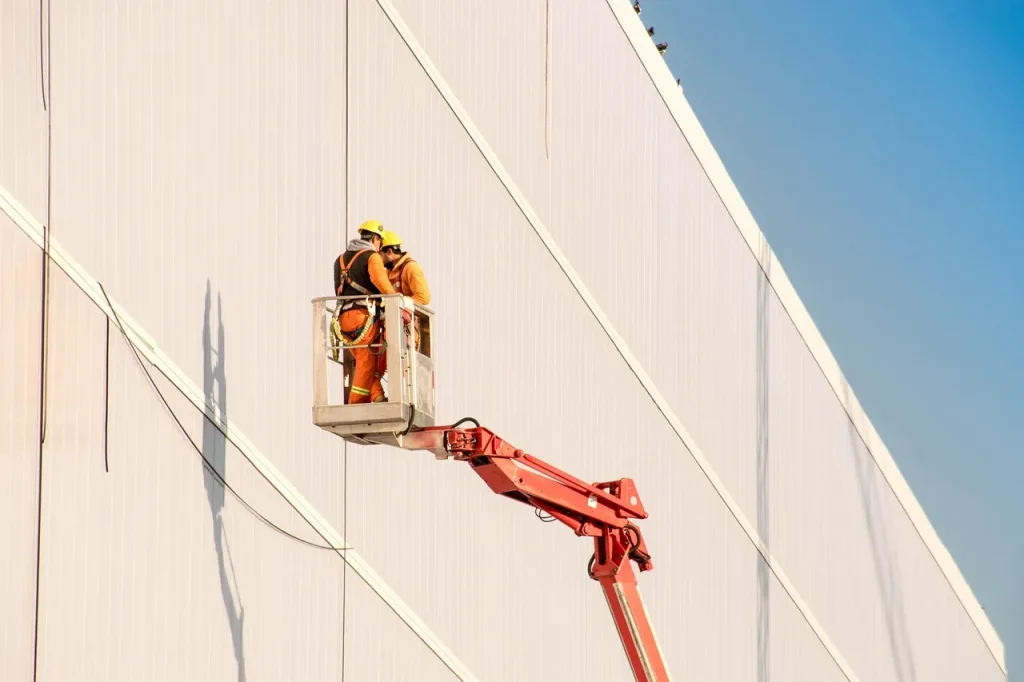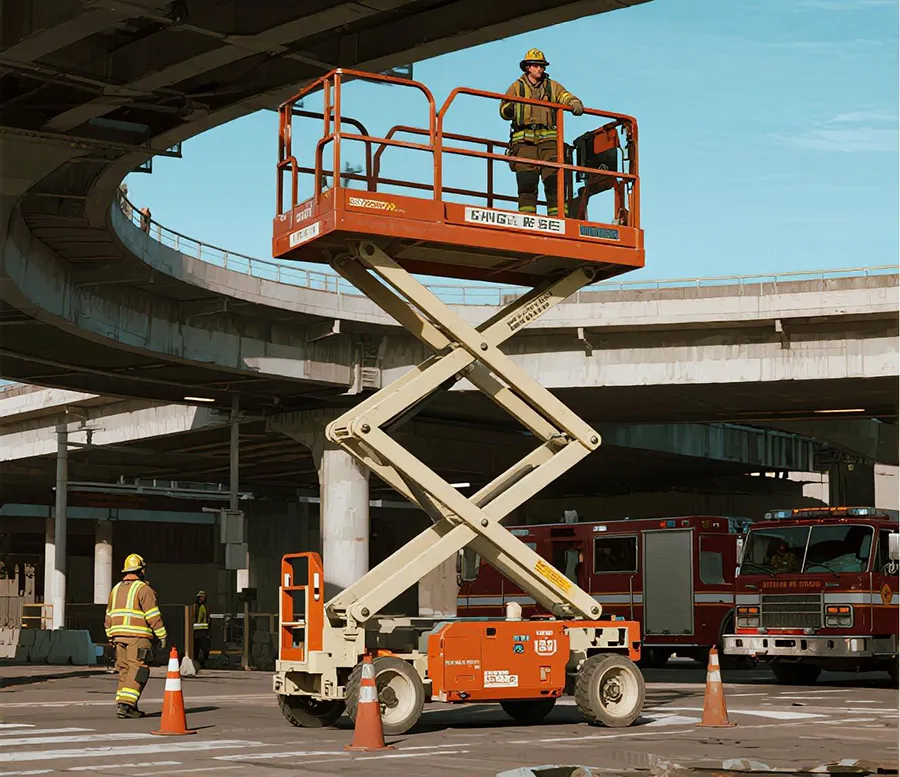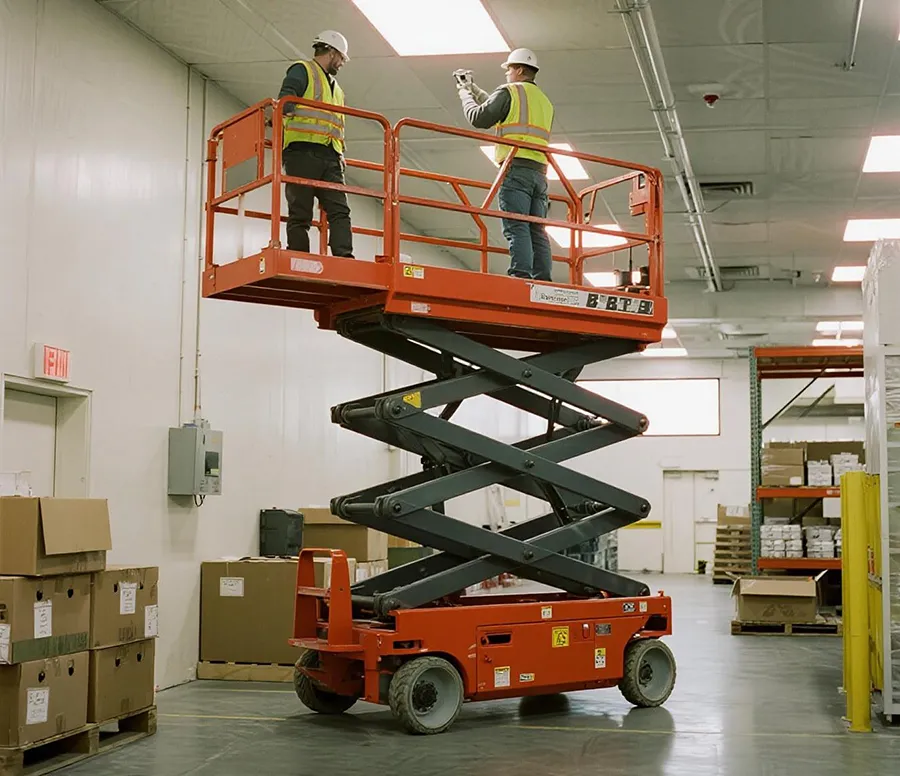Why Choosing the Right Lift Used in Construction Matters?
Selecting the right lift directly impacts a project’s three core pillars: safety, efficiency, and cost. Using incorrect equipment can lead to serious safety incidents (OSHA reports falls from heights caused 39% of construction fatalities in 2023), reduce productivity, and trigger unnecessary expenses.
- Enhancing Safety: Lifts provide a stable, guarded work platform, significantly slashing fall risks compared to ladders or traditional scaffolding. Furthermore, compliance with Occupational Safety and Health Administration (OSHA) regulations—such as requiring operators to use personal fall arrest systems, including harnesses and lanyards—is critical for preventing accidents and avoiding fines.
- Boosting Efficiency & Productivity: Lifts can typically be set up or repositioned in minutes, whereas assembling scaffolding may take hours. Many self-propelled lifts can even relocate with the platform fully raised, allowing crews to move swiftly between work areas—drastically cutting downtime.
- Cost Effectiveness: While purchasing new lift equipment requires a major investment, renting or buying used units offers flexible, economical solutions for short-term or occasional projects. This approach avoids high upfront capital costs. Additionally, the efficiency gains that shorten project timelines directly lower labor expenditures.
Understanding the Different Types of Construction Lifts
1. Scissor Lifts
Scissor lifts are supported by a crisscrossing scissor-like structure beneath the platform, allowing only vertical movement. They are ideal for teams that need to work together in the same area, as they offer a larger work platform and higher load capacity. This makes them perfect for applications such as indoor installations, ceiling work, warehouse stocking, exterior wall repairs, sign hanging, and window cleaning. Depending on the working environment, scissor lifts are available in electric models designed for smooth indoor floors, as well as diesel or gas-powered models equipped with heavy-duty tires for rough outdoor construction sites.
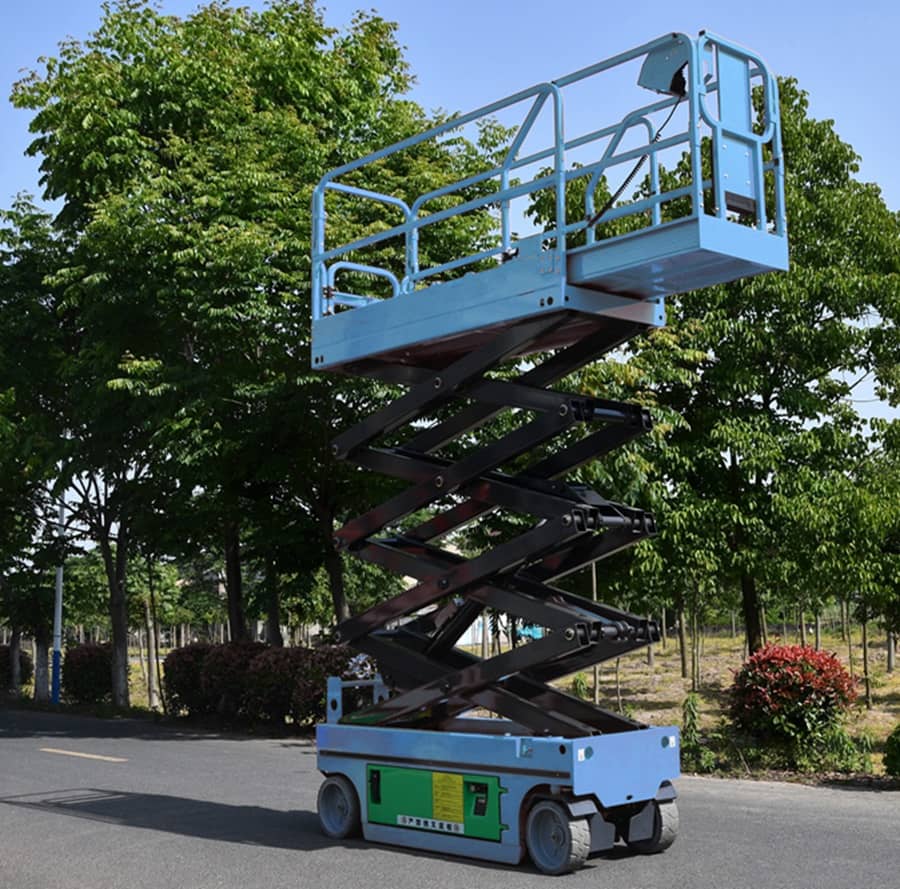
2. Boom Lifts
Boom lifts feature extendable arms for versatile access to elevated or obstructed areas.
2.1 Telescopic Boom Lifts
Telescopic boom lifts feature a straight, extendable arm mounted on a rotating turntable. This design provides exceptional vertical height and horizontal reach, making it ideal for tasks requiring significant distance from the base.
They excel in outdoor applications like structural steel installation, bridge inspections, high-reach electrical repairs, and tree trimming. The operator platform (bucket) is typically compact, accommodating 1-2 workers. Their extended range suits specialized jobs where access is challenging or requires precise positioning from a distance.
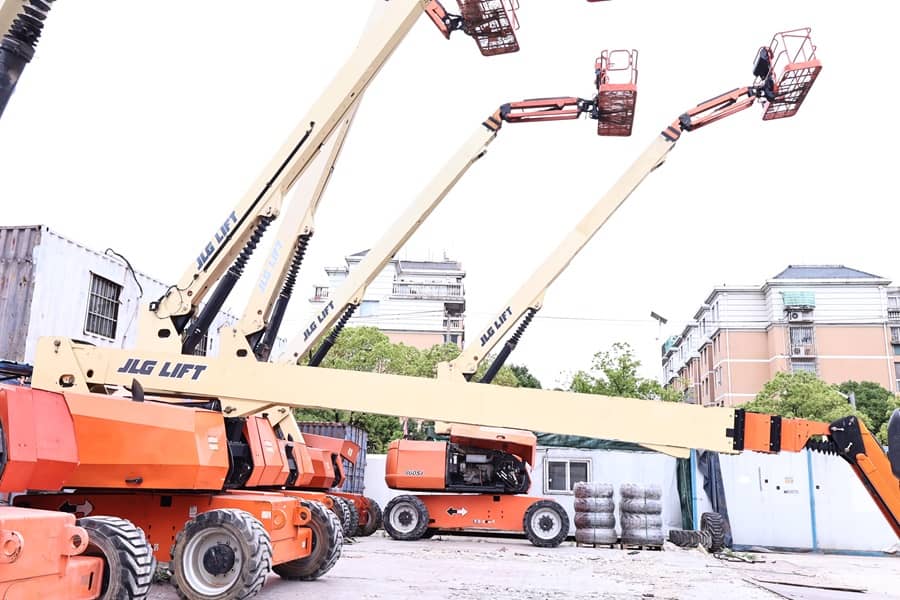
2.2 Articulating Boom Lifts
Articulating boom lifts have multiple joint points on their boom arms, allowing them to bend and maneuver around obstacles with ease. This enables workers to be positioned precisely at hard-to-reach job sites. They are especially useful in complex construction environments, as well as for plumbing and electrical maintenance tasks.
Spider lifts, also known as atrium lifts, are a compact type of articulating boom lift designed for working in tight spaces. These ultra-narrow and lightweight lifts use four extendable “legs” for stability, allowing them to reach impressive heights even in confined indoor environments.
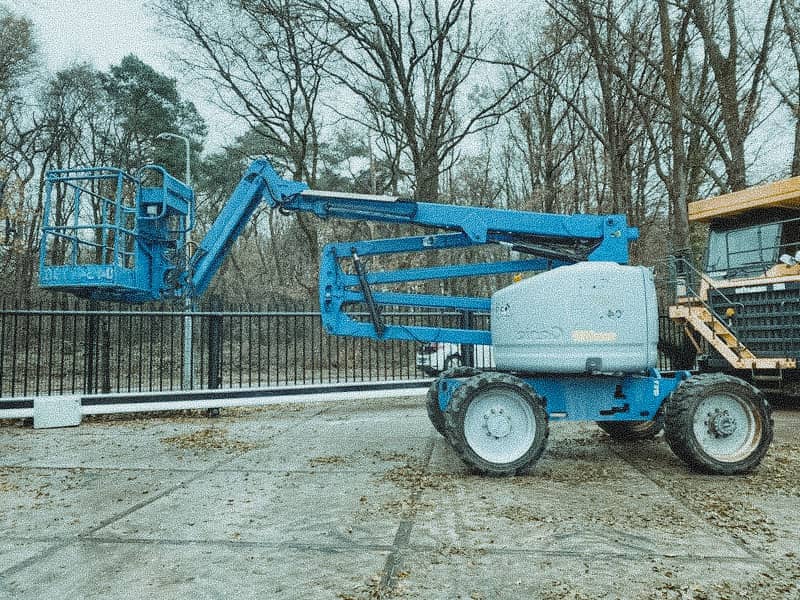
3. Mast Lifts (Vertical Personnel Lifts)
Mast lifts are compact and typically designed for single-person use, making them ideal for working in tight indoor spaces such as warehouse aisles or crowded office buildings. When scissor lifts are too large to access certain areas, mast lifts become the perfect solution.
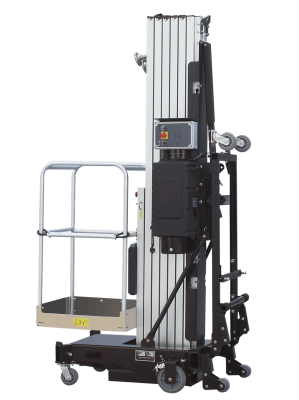
4. Material Lifts
Material lifts are engineered exclusively for transporting goods and equipment, not personnel. Unlike aerial work platforms (AWPs), they lack fall protection systems and operator enclosures, making them unsuitable for human elevation. These machines prioritize load capacity, reach, and terrain adaptability to streamline construction logistics.
4.1 Telescopic Forklifts (Telehandlers)
Combining the robust lifting mechanics of a traditional forklift with the extended reach of a telescopic boom, they feature an extendable arm tipped with interchangeable attachments like forks, buckets, or winches. This dual functionality allows operators to place pallets of supplies, steel beams, or trusses precisely in elevated or hard-to-access locations—such as upper building floors or over obstacles—without repositioning the base machine.
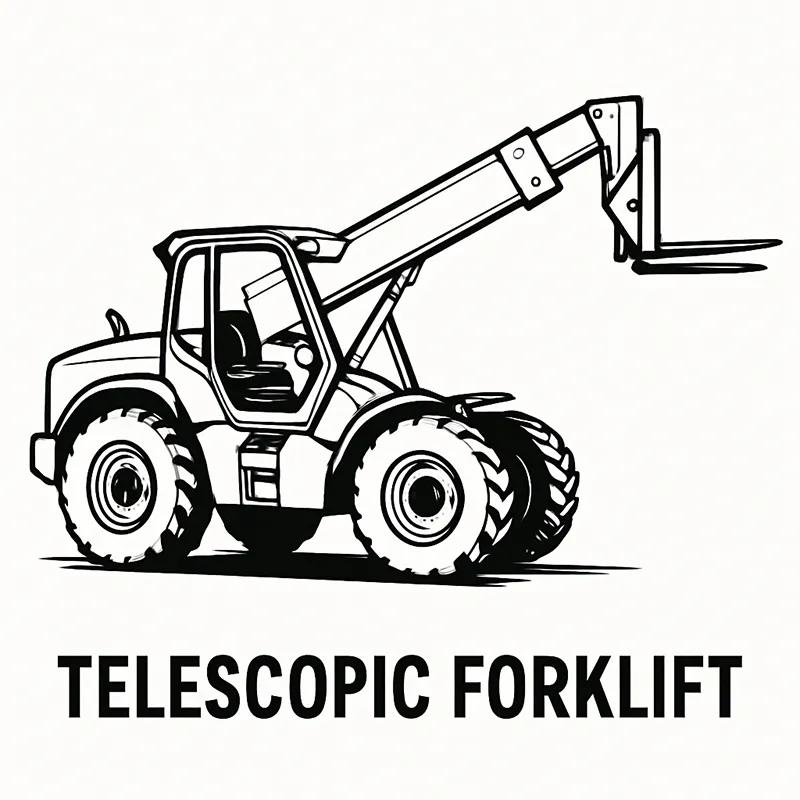
4.2 Rough Terrain Forklifts
Rough terrain forklifts specialize in transporting heavy materials across expansive, unstable job sites. Unlike telehandlers, their lifting mechanism operates vertically, prioritizing stability and load capacity over horizontal reach. These forklifts excel in long-distance material movement, such as hauling concrete pipes across a highway project or distributing lumber on a sprawling residential development site.
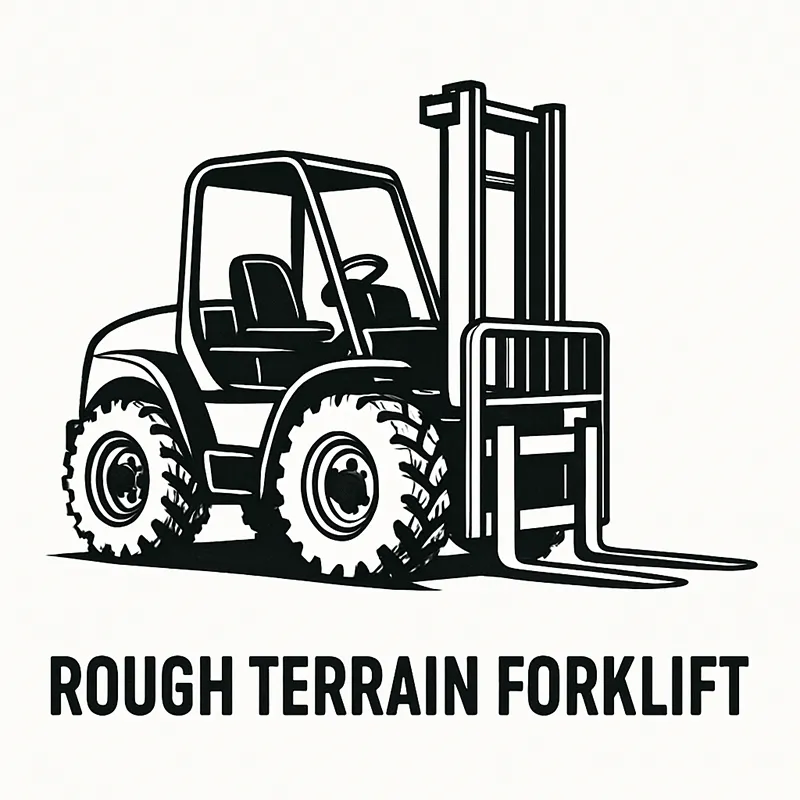
4.3 Heavy-Duty Forklifts
Heavy-duty forklifts are the workhorses of industrial material handling, engineered for extreme vertical lifting in controlled environments. Boasting capacities of up to 36,000 pounds, they feature massive counterweights, solid or cushioned tires, and vertical mast systems designed to hoist oversized loads like industrial machinery, precast concrete panels, or shipping containers.
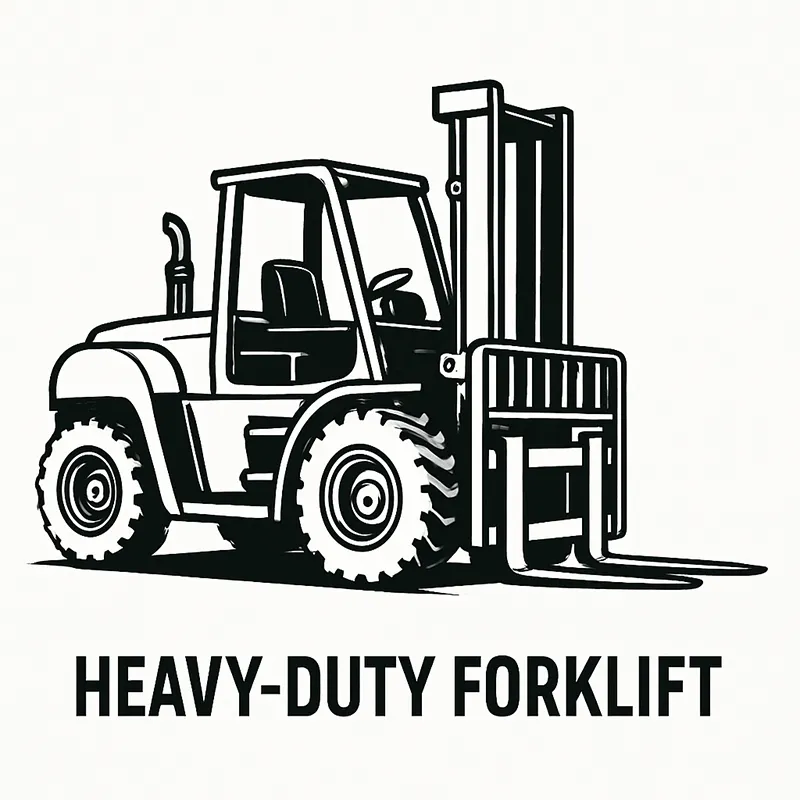
Click here to learn more detailed information related to “types of aerial work platforms“.
Factors to Consider When Choosing a Construction Lift
Conducting a thorough project assessment is crucial before selecting a lift.
1. Height Requirements
The first step is to determine the maximum working height needed. Boom lifts generally offer two to three times the working height compared to scissor lifts. A practical tip is to calculate the required working height by adding the operator’s height to the platform’s maximum elevation.
2. Weight Capacity
Always calculate the total weight that needs to be lifted, including workers, tools, and all materials, to avoid overloading the platform. Typically, scissor lifts offer higher load capacities than boom lifts.
3. Terrain and Ground Conditions
The condition of the job site’s ground is a decisive factor. Smooth indoor surfaces, such as tile or wood flooring, require electric lifts equipped with non-marking solid tires. For outdoor sites with uneven or soft, muddy ground, rough-terrain models with four-wheel drive and special off-road tires are essential.
4. Indoor vs Outdoor Use
Indoor jobs usually require electric lifts that produce zero emissions and minimal noise. For outdoor projects, especially on sites without power sources, powerful diesel or gas lifts are more suitable.
5. Power Source (Electric vs Diesel)
- Electric Lifts: Quiet operation with no exhaust emissions, making them ideal for indoor use and noise-sensitive areas. However, charging considerations are important; ensure the job site has a stable power supply, as a full battery charge typically takes about 8 hours.
- Diesel Lifts: Deliver stronger power and torque for heavy-duty tasks, making them the preferred choice for outdoor and rough-terrain applications.
6. Mobility and Space Constraints
Evaluate space restrictions on the job site, such as narrow doorways, passageways, or overhead obstacles. Compact mast or scissor lifts are suitable for tight spaces. If horizontal movement to bypass obstacles is necessary, boom lifts are the only viable option.
7. Safety Features and Regulations
Safety should always be the top priority. Ensure the selected lift is equipped with essential safety features such as guardrails. Additionally, all operators must receive professional training and obtain proper certification. Complying with industry safety standards like OSHA is critical, which includes the mandatory use of full-body harnesses and lanyards in boom lifts as part of personal fall protection systems.
Conclusion
Choosing the right lift for a construction project is a critical decision that directly impacts site safety, operational efficiency, and overall profitability. By systematically evaluating project needs—including working height, load capacity, ground conditions, space constraints, and power source—and matching them with the unique features of different lift types, contractors and project managers can ensure that their equipment choices deliver the safest and most efficient results, ultimately driving project success.
At Holdwell, we offer a wide selection of top-brand used lifts and new aerial lift equipment, ensuring you get the right solution for your project’s needs. Whether you need a scissor lift, boom lift, or compact mast lift, we’ve got you covered with quality machines and expert support. Contact us now for a free quote!

